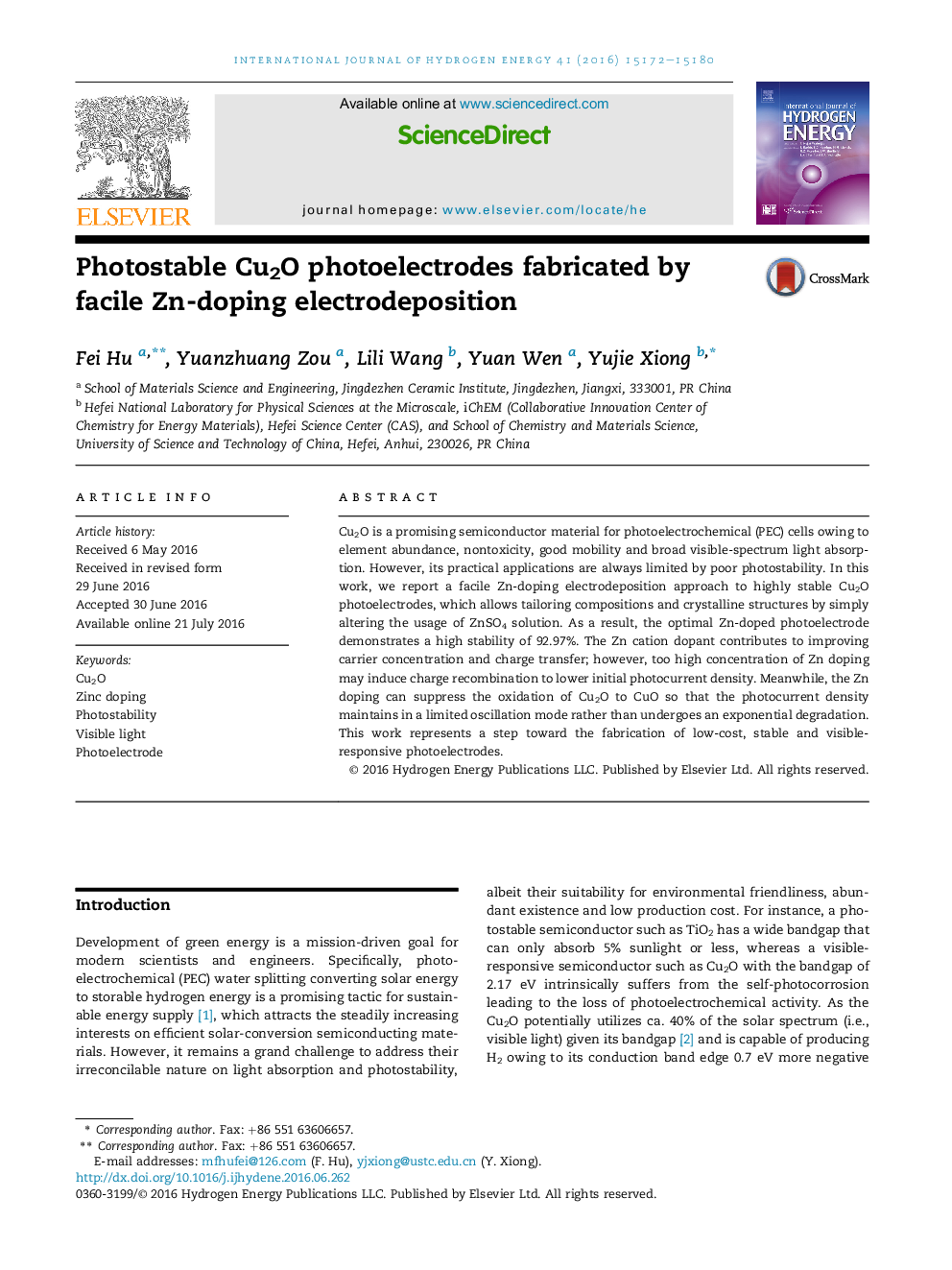| Article ID | Journal | Published Year | Pages | File Type |
|---|---|---|---|---|
| 1270395 | International Journal of Hydrogen Energy | 2016 | 9 Pages |
•Zinc-doped Cu2O films are fabricated by a facial electrodeposition method.•The optimal Zn-doped Cu2O photoelectrode demonstrates a high stability of 92.97%.•The mechanism for photostability improvement by zinc doping is investigated.•This work provides a new strategy for fabricating photostable electrodes toward photoelectrochemical applications.
Cu2O is a promising semiconductor material for photoelectrochemical (PEC) cells owing to element abundance, nontoxicity, good mobility and broad visible-spectrum light absorption. However, its practical applications are always limited by poor photostability. In this work, we report a facile Zn-doping electrodeposition approach to highly stable Cu2O photoelectrodes, which allows tailoring compositions and crystalline structures by simply altering the usage of ZnSO4 solution. As a result, the optimal Zn-doped photoelectrode demonstrates a high stability of 92.97%. The Zn cation dopant contributes to improving carrier concentration and charge transfer; however, too high concentration of Zn doping may induce charge recombination to lower initial photocurrent density. Meanwhile, the Zn doping can suppress the oxidation of Cu2O to CuO so that the photocurrent density maintains in a limited oscillation mode rather than undergoes an exponential degradation. This work represents a step toward the fabrication of low-cost, stable and visible-responsive photoelectrodes.
Graphical abstractA high stability of 92.97% has been achieved for a Cu2O electrode by zinc doping, in which the photocurrent density oscillates in a relatively stable manner despite the inevitable oxidation of Cu2O to CuO.Figure optionsDownload full-size imageDownload as PowerPoint slide
